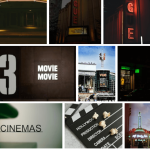Introduction
Classic Hollywood Films: A Journey Through Tinseltown’s Golden Age is a captivating exploration into the cinematic era that defined the glamour and allure of Hollywood. In this article, we will delve into the roots of this golden age, its iconic films, legendary stars, technological advancements, and the lasting impact on both the film industry and popular culture.
Definition of Classic Hollywood Films
Classic Hollywood films refer to the timeless masterpieces produced during the heyday of the American film industry, roughly spanning from the 1920s to the early 1960s. These films are characterized by their enduring storytelling, artistic brilliance, and cultural significance.
Significance of the Golden Age
The Golden Age represents a pinnacle in Hollywood’s history, marked by unprecedented creativity, innovation, and global influence. It laid the foundation for the modern cinematic landscape and shaped the way we perceive and consume movies.
Rise of Studios

Major Hollywood Studios
During this era, a handful of major studios emerged as industry giants, including MGM, Warner Bros., and Paramount. These studios played a pivotal role in shaping the narrative of classic Hollywood films, each contributing a unique flavor to the cinematic tapestry.
Birth of the Studio System
The Studio System, characterized by long-term contracts and exclusive control over actors, directors, and production crews, became the backbone of Hollywood’s success. It streamlined production processes and ensured a consistent output of high-quality films.
Iconic Films

Birth of Iconic Films
Classic Hollywood films gifted the world with timeless classics such as “Gone with the Wind,” “Casablanca,” and “Citizen Kane.” These films not only entertained but also left an indelible mark on the cultural landscape, influencing subsequent generations of filmmakers.
Impact on Pop Culture
The influence of these films extended beyond the silver screen, permeating fashion, language, and societal norms. Classic Hollywood films became cultural touchstones, shaping the aspirations and dreams of audiences worldwide.
Glamorous Stars

Legendary Actors and Actresses
The Golden Age introduced us to iconic figures like Clark Gable, Audrey Hepburn, and Humphrey Bogart. Their charisma, talent, and larger-than-life personas made them the epitome of Hollywood glamour.
Hollywood’s Star System
The star system, a marketing strategy that elevated actors to almost mythical status, contributed to the allure of classic Hollywood films. Audiences eagerly followed the lives and loves of their favorite stars, creating a symbiotic relationship between celebrities and the public.
Technological Advancements
Evolution of Cinematography
The Golden Age witnessed significant advancements in cinematography, with filmmakers experimenting with new techniques and visual styles. The use of Technicolor, innovative lighting, and groundbreaking camera movements elevated the visual language of cinema.
Introduction of Sound
One of the transformative moments in film history was the introduction of synchronized sound. This technological leap brought a new dimension to storytelling, allowing filmmakers to integrate dialogue, music, and sound effects seamlessly.
Genres of the Golden Age
Popular Film Genres
Classic Hollywood films spanned various genres, from romantic comedies and musicals to film noir and epic dramas. Each genre contributed to the diversity and richness of the era’s cinematic offerings.
Notable Examples
From the screwball comedy of “Bringing Up Baby” to the film noir masterpiece “Double Indemnity,” the Golden Age produced a plethora of films that not only entertained but also explored the complexities of the human experience.
Historical Context
Socioeconomic Influences
The interplay between Hollywood and societal changes during the Golden Age was profound. The escapism provided by films offered solace during challenging times, such as the Great Depression and World War II.
World Events and Hollywood
The industry’s response to global events, be it wartime propaganda or post-war optimism, mirrored the collective psyche of the nation. Hollywood became a mirror, reflecting the hopes and fears of society.
Awards and Recognition
Oscars and Prestigious Awards
The Golden Age saw the establishment of the Academy Awards, honoring outstanding achievements in the film industry. Films like “Gone with the Wind” and “Casablanca” not only garnered critical acclaim but also clinched numerous Oscars.
Cultural Impact
The accolades bestowed upon Classic Hollywood Films elevated the industry’s prestige, reinforcing its role as a powerful cultural influencer. Oscar-winning films became timeless classics, etching their names into the annals of cinema history.
Decline of the Golden Age
Reasons behind Decline
The end of the Golden Age was marked by various factors, including the advent of television, changing audience preferences, and challenges posed by independent filmmaking. Hollywood underwent a seismic shift that signaled the conclusion of an era.
Shifts in Audience Preferences
As societal values evolved, so did audience tastes. The emergence of new filmmaking styles and genres signaled a departure from the traditional narrative structures characteristic of classic Hollywood films.
Legacy of Classic Hollywood
Influence on Modern Filmmaking
The enduring legacy of classic Hollywood films is evident in contemporary cinema. Filmmakers continue to draw inspiration from the storytelling techniques, visual aesthetics, and thematic depth pioneered during the Golden Age.
Nostalgia and Revival
The nostalgia associated with classic Hollywood films persists, leading to periodic revivals of interest in the era. From film festivals to digital streaming platforms, audiences continue to rediscover and celebrate the magic of these timeless classics.
Impact on Fashion
Hollywood’s Influence on Fashion Trends
Classic Hollywood films not only shaped the world of cinema but also left an indelible mark on the fashion industry. Iconic wardrobe moments, such as Audrey Hepburn’s little black dress in “Breakfast at Tiffany’s,” became cultural touchstones.
Iconic Wardrobe Moments
The glamorous attire of Hollywood stars became aspirational, influencing fashion trends for decades. From Marilyn Monroe’s glamorous gowns to Cary Grant’s dapper suits, the sartorial choices of Golden Age celebrities continue to inspire designers and fashion enthusiasts.
Classic Hollywood Directors
Pioneering Directors
The Golden Age produced visionary directors like Alfred Hitchcock, Howard Hawks, and Billy Wilder. Their innovative storytelling techniques and cinematic craftsmanship set the standards for excellence, shaping the course of film history.
Their Contributions
From Hitchcock’s suspenseful thrillers to Wilder’s biting wit, these directors crafted narratives that transcended the screen, leaving an indelible mark on the art of filmmaking. Their contributions continue to be studied and revered by filmmakers worldwide.
Hollywood Scandals

Notable Scandals of the Golden Age
The glitz and glamour of Hollywood were often accompanied by scandals that captivated the public. From the love affairs of stars like Elizabeth Taylor and Richard Burton to the legal troubles of Charlie Chaplin, these scandals added an extra layer of intrigue to the industry.
Impact on the Industry
While scandals fueled tabloid headlines, they also shaped the public’s perception of Hollywood. The dichotomy between the carefully crafted public image of stars and their private lives contributed to the mystique of classic Hollywood.
Preservation Efforts
Restoration of Classic Films
As time passed, the preservation of classic Hollywood films became crucial. Restoration efforts, supported by film enthusiasts and preservationists, ensured that these cinematic treasures would be accessible to future generations.
Importance of Film Preservation
Preserving these films is not merely a nod to nostalgia but a commitment to safeguarding cultural heritage. Classic Hollywood films are windows into the past, allowing audiences to connect with the dreams, aspirations, and challenges of bygone eras.
Future of Classic Hollywood Films
Continuing Legacy
The magic of classic Hollywood films continues to captivate audiences, transcending generational boundaries. As new technologies emerge, ensuring the accessibility of these films becomes paramount to keeping the flame of the Golden Age burning bright.
New Generations:
The digital age has democratized access to classic Hollywood films, enabling newer generations to explore the magic of the Golden Age. Streaming platforms and film festivals serve as gateways for discovering the timeless allure of Hollywood’s yesteryear.
FAQs
Q: How long did the Golden Age of Hollywood last?
The Golden Age of Hollywood is generally considered to have spanned from the 1920s to the early 1960s, marking several decades of unparalleled creativity and influence.
Q: Who were some of the iconic stars of classic Hollywood films?
Legendary actors and actresses such as Clark Gable, Audrey Hepburn, Humphrey Bogart, Marilyn Monroe, and Cary Grant became iconic figures during this era.
Q: What is the significance of the studio system in classic Hollywood?
The Studio System, characterized by exclusive contracts and centralized control, streamlined film production, contributing to the success and influence of classic Hollywood.
Q: How did the Golden Age impact fashion trends?
Classic Hollywood films had a profound influence on fashion, with iconic wardrobe moments of stars shaping trends that continue to inspire designers and enthusiasts.
Q: Why did the Golden Age of Hollywood decline?
The decline of the Golden Age can be attributed to factors such as the rise of television, changing audience preferences, and challenges posed by independent filmmaking.
Q: What is the importance of preserving classic Hollywood films?
Preserving classic Hollywood films is essential for safeguarding cultural heritage and allowing future generations to connect with the artistic and societal nuances of the past.
Conclusion
In conclusion, Classic Hollywood Films: A Journey Through Tinseltown’s Golden Age is a testament to the enduring magic of an era that defined the very essence of cinema. As we explore the studios, films, stars, and scandals that shaped this period, we recognize its profound impact on our cultural tapestry. The legacy of the Golden Age lives on, enchanting new generations and ensuring that the silver screen’s golden moments are never forgotten.













